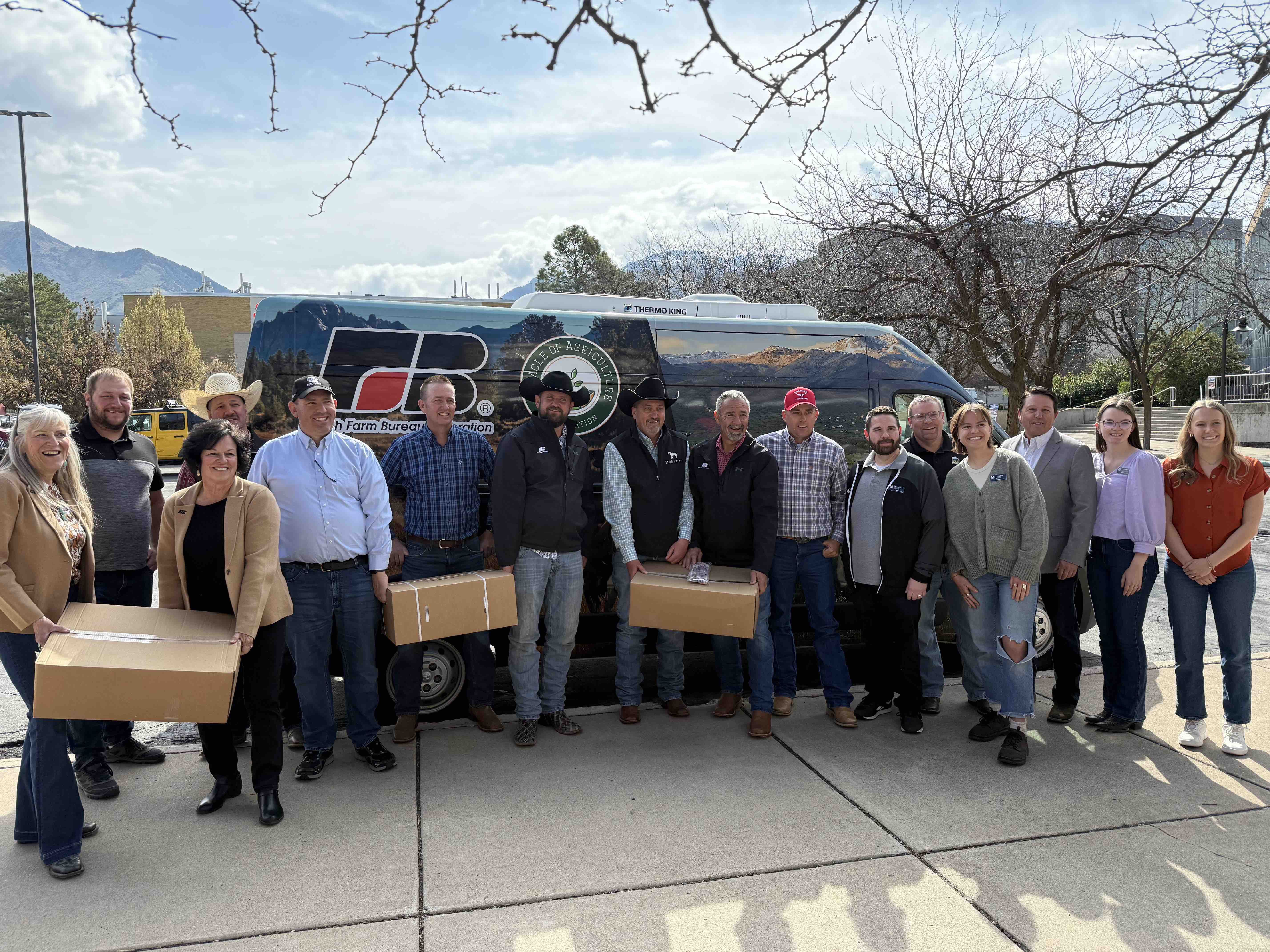USU, Cache Food Pantries Receive Donations From Utah Department of Ag, Food & Utah Farm Bureau
Author
Published
5/7/2025
The Student Nutrition Access Center at Utah State University’s Logan campus recently received a donation of 1,000 pounds of ground beef from the Miracle of Agriculture Foundation, the charitable arm of the Utah Farm Bureau, in partnership with the Utah Department of Agriculture and Food. An additional 1,000 pounds of beef was donated to the Cache Community Food Pantry.
The donations are part of a statewide effort to deliver high-quality protein to food pantries at a time when such items are especially difficult to source. The beef donation to SNAC and the Cache Community Food Pantry was made possible through contributions to the Miracle of Agriculture Foundation, including financial support and livestock donations from partners like The Church of Jesus Christ of Latter-day Saints.
“Our Miracle of Agriculture Foundation continues to evolve and provide help to those in need, and especially to provide an excellent protein source to community pantries that have a harder time sourcing it,” said Clayton Beckstead, director of the Miracle of Agriculture Foundation. “We continue to work with partners throughout our state and accept donations so we can facilitate providing food to communities in need.”
Utah Farm Bureau Federation President ValJay Rigby added: “Farmers and ranchers love growing and producing food, and they also feel strongly about helping their neighbors in their communities. We were happy to visit these pantries in Cache Valley and provide some meat for those in need. It is sobering to learn of the great need, but we are in a position to do something about it with meat from animals that are raised right here in Utah.”
 UFBF Board of Directors, SNAC staff, and USU College Farm Bureau leaders gather for the meat donation on the USU Campus.
UFBF Board of Directors, SNAC staff, and USU College Farm Bureau leaders gather for the meat donation on the USU Campus.The need for nutritious, high-quality food is especially pronounced on college campuses. At Utah State, recent surveys show that 62% of students on the Logan campus experience low or very low food security — meaning they often skip meals, reduce food intake or eat lower-quality foods due to limited resources. Among students who use SNAC, 67% say the program helps them avoid skipping meals.
SNAC Program Director Jonathon Walters said the donation of beef will go a long way toward helping students.
“During peak times of the year, we serve nearly 1,000 students each week,” he said. “This kind of donation allows us to keep an important protein source in stock and ensure that students have access to nutritious food.”
SNAC operates through a combination of food purchases made with donations, as well as recovered food from campus dining and local restaurants that would otherwise go to waste.
Casey Coombs, assistant professor in the Department of Nutrition, Dietetics and Food Sciences and SNAC’s faculty director, emphasized that food insecurity shouldn't be normalized.
“People think of the ‘starving college student’ as kind of a rite of passage, but it really doesn't have to and shouldn't be that way,” Coombs said. “Adequate nutrition is key to students’ abilities to learn and succeed academically.”
In addition to SNAC and the Cache Community Food Pantry, the Miracle of Agriculture Foundation has made recent meat donations to food pantries in Box Elder, Carbon and Washington counties — helping communities throughout Utah during a season when pantry supplies typically run low.
Want more news on this topic? Farm Bureau members may subscribe for a free email news service, featuring the farm and rural topics that interest them most!
